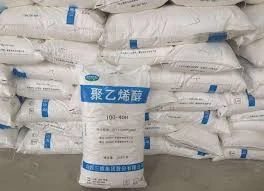The Versatility of Cellulose Polymer Nature’s Ingenious Solution
Cellulose, a complex carbohydrate found in the cell walls of plants, is the most abundant organic polymer on Earth. It serves as a crucial structural component in plant cells, providing rigidity and strength. As a cellulose polymer, it has gained significant attention in various fields due to its unique properties and environmental benefits. This article explores the versatility of cellulose polymers, their applications, and their potential to contribute to a sustainable future.
Structure and Properties of Cellulose
Cellulose is composed of long chains of glucose units linked by β-1,4-glycosidic bonds. This linear structure allows cellulose molecules to pack tightly together, forming crystalline regions that enhance its strength and stability. The hydrogen bonding between the chains provides cellulose with high tensile strength, making it resistant to degradation. Additionally, cellulose is biodegradable, non-toxic, and renewable, making it an attractive alternative to synthetic polymers derived from fossil fuels.
Applications of Cellulose Polymer
The applications of cellulose polymers are vast and varied, spanning industries such as textiles, pharmaceuticals, food, and packaging
.1. Textiles One of the most common forms of cellulose polymer is rayon, derived from regenerated cellulose. Rayon is used in clothing, upholstery, and other textile applications due to its softness and breathability. Additionally, cellulose fibers such as cotton and linen are extensively used in the textile industry, offering comfort and durability.
2. Pharmaceuticals In the pharmaceutical industry, cellulose polymers are employed as excipients in drug formulations. Microcrystalline cellulose, for instance, serves as a filler, binder, and disintegrant in tablets and capsules. Its biocompatibility and ability to enhance the bioavailability of active pharmaceutical ingredients make cellulose a valuable component in medicine.
3. Food Industry Cellulose derivatives, like carboxymethyl cellulose, are widely used as food additives. They act as thickeners, stabilizers, and emulsifiers, improving the texture and shelf life of various food products. Moreover, cellulose is a source of dietary fiber, promoting digestive health and providing a sense of fullness, which is beneficial in weight management.
'cellulose polymer'

4. Packaging In recent years, there has been a growing shift towards sustainable packaging solutions. Cellulose-based materials, such as biodegradable films and coatings, are being developed to replace conventional plastics. These materials not only reduce environmental impact but also maintain the functionality and barrier properties required for effective packaging.
Environmental Benefits
One of the most compelling arguments for using cellulose polymers is their environmental sustainability. Unlike petroleum-based plastics, cellulose is derived from renewable resources, primarily wood and agricultural by-products. The production of cellulose polymers typically has a lower carbon footprint compared to synthetic alternatives, making them more environmentally friendly.
Additionally, cellulose polymers are biodegradable. When disposed of, they can break down naturally, integrating back into the ecosystem without causing long-term pollution, as seen with traditional plastics. This property is crucial in mitigating the growing concern of plastic waste that has permeated oceans and landfills worldwide.
Challenges and Future Directions
Despite their many advantages, the processing and commercialization of cellulose polymers pose challenges. The production of cellulose derivatives often involves chemical modification, which can affect the sustainability of the product. Furthermore, ensuring consistent quality and functionality in cellulose materials is essential for their acceptance in various applications.
Research is ongoing to enhance the properties of cellulose-based materials, such as improving their mechanical strength, water resistance, and thermal stability. Innovations in biotechnology, including the use of enzymes and green chemistry, hold promise in developing more efficient and eco-friendly methods for cellulose processing.
Conclusion
Cellulose polymer stands as a testament to nature's ingenuity, providing an abundance of solutions across numerous industries. Its biodegradability and renewable nature align perfectly with contemporary demands for sustainability and environmental responsibility. As research progresses and technology advances, cellulose polymers are poised to play an increasingly significant role in creating a greener, more sustainable future. Through innovation and responsible application, we can harness the potential of cellulose to address some of the pressing challenges of our time.




